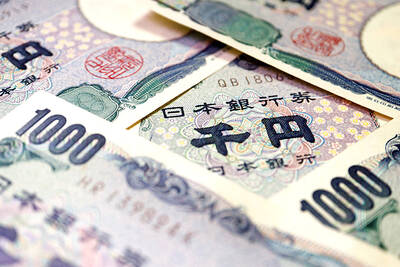With freezing winters and cool summers, Finland could never be a destination of choice for the world’s sun-seekers.
However, its chilly weather has attracted technology giants such as Google and Microsoft that seek a cool haven for thousands of servers holding terabytes of data from around the world.
“In Finland we are excited that we can finally turn [our] cold climate and uneventful boring society into a competitive advantage,” tech-industry writer Petteri Jaervinen said.
The rapid rise of the Internet and the digital economy have fueled an exponential growth in demand for data storage.
Data banks generate a lot of heat and are very expensive to cool, particularly in hot weather. That means companies can bank large savings by locating servers in countries like Finland.
In 2009, Google bought an old paper factory in Hamina, a town near the Russian border, and converted it into a data center cooled with Baltic sea water.
Microsoft followed suit late last year with a US$250 million project to build a data center in northern Finland.
Microsoft also bought the handset unit of Finnish mobile telephone maker Nokia, but said on Thursday it will slash 18,000 jobs from its global workforce, most of which are at Nokia.
Now, Helsinki hopes a new 1,000km fiber-optic cable beneath the Baltic Sea is to give it an extra edge in the global data race — and a much-needed shot in the arm for its flagging economy.
After two years of recession, Finnish policymakers are desperate for good news — and the cable linking Finland with Germany, which could be operational as early as next year, might be it.
Finnish Minister for International Development Pekka Haavisto hopes the cable can help revitalize the technology industry in a country that once led the field as the home of Nokia, but has since fallen on hard times.
When plans for the undersea link to Germany were unveiled last year, he said that it might one day be hooked up via Finland to another that could run under the Northeast Passage in the Arctic ocean — providing a super fast data route to Asia.
That, he hoped, would make Finland “a decisive link” in the global data network.
It’s not just the weather attracting tech giants to Finland, with its existing 7,100km of domestic fiber-optic cable laid down along railway tracks already a powerful draw.
“Without the cables, we wouldn’t have customers,” said Carl Wideman, director of Invest in Kainuu, an agency which promotes the central region of northern Finland.
The British firm Telecity is already taking advantage of the savings in costs of locating its storage centers in Finland, with several located around the capital.
Walking past banks of humming servers in a massive data storage center on the edge of Helsinki, Telecity’s sales manager Sami Holopainen sees the Baltic Sea cable as “very good news.”
Other Nordic countries are also trying to take advantage of rising demand for data storage.
Sweden, home to Facebook’s first European data center, and Iceland, which boasts a strategic location between Europe and the US, are also cashing in.
“The Nordic countries have fairly similar qualities: cold climate, political stability, good infrastructures,” said Keijo Heljanko, an associate professor of computer science at Helsinki’s Aalto University.
That means Finland’s new fiber-optic cable could give it a decisive edge over regional rivals.
The cable will connect it directly to Europe, cutting out the current transmission route through Sweden and then under the Oeresund strait to Denmark.
Cutting the number of countries data streams have to pass through not only makes systems more efficient, it also reduces the risk of exposing them to prying eyes.
“In Sweden, the intelligence agency has an open and legal mandate to spy on everything that passes through the Swedish networks,” Jaervinen said.
“In Finland, we don’t have any of this,” he said.
For Finland, which is mired in recession and grappling with an aging population and rising unemployment, attracting new industry is vital.
The Finnish government is backing the data-storage drive and has pledged to finance one third of the 100 million euro (US$136 million) Baltic cable project.
Wideman said the goal “is not to just house these centers, but to create jobs around them.”

AI TALENT: No financial details were released about the deal, in which top Groq executives, including its CEO, would join Nvidia to help advance the technology Nvidia Corp has agreed to a licensing deal with artificial intelligence (AI) start-up Groq, furthering its investments in companies connected to the AI boom and gaining the right to add a new type of technology to its products. The world’s largest publicly traded company has paid for the right to use Groq’s technology and is to integrate its chip design into future products. Some of the start-up’s executives are leaving to join Nvidia to help with that effort, the companies said. Groq would continue as an independent company with a new chief executive, it said on Wednesday in a post on its Web

RESPONSE: The Japanese Ministry of Finance might have to intervene in the currency markets should the yen keep weakening toward the 160 level against the US dollar Japan’s chief currency official yesterday sent a warning on recent foreign exchange moves, after the yen weakened against the US dollar following Friday last week’s Bank of Japan (BOJ) decision. “We’re seeing one-directional, sudden moves especially after last week’s monetary policy meeting, so I’m deeply concerned,” Japanese Vice Finance Minister for International Affairs Atsushi Mimura told reporters. “We’d like to take appropriate responses against excessive moves.” The central bank on Friday raised its benchmark interest rate to the highest in 30 years, but Bank of Japan Governor Kazuo Ueda chose to keep his options open rather than bolster the yen,

Even as the US is embarked on a bitter rivalry with China over the deployment of artificial intelligence (AI), Chinese technology is quietly making inroads into the US market. Despite considerable geopolitical tensions, Chinese open-source AI models are winning over a growing number of programmers and companies in the US. These are different from the closed generative AI models that have become household names — ChatGPT-maker OpenAI or Google’s Gemini — whose inner workings are fiercely protected. In contrast, “open” models offered by many Chinese rivals, from Alibaba (阿里巴巴) to DeepSeek (深度求索), allow programmers to customize parts of the software to suit their

Global server shipments are expected to surge to 15 million units next year, from 4 million units this year, with artificial intelligence (AI) servers accounting for about 30 percent, driven by massive capital spending by major cloud service providers, the Market Intelligence and Consulting Institute (MIC) said on Thursday last week. Major cloud service providers — including Google’s parent company Alphabet Inc, Microsoft Corp, Amazon.com Inc and Meta Platforms Inc — are projected to budget US$450 million for capital expenditure next year, up from US$400 million this year, MIC ICT [information and communications technology] Industry Research Center director Edward Lin